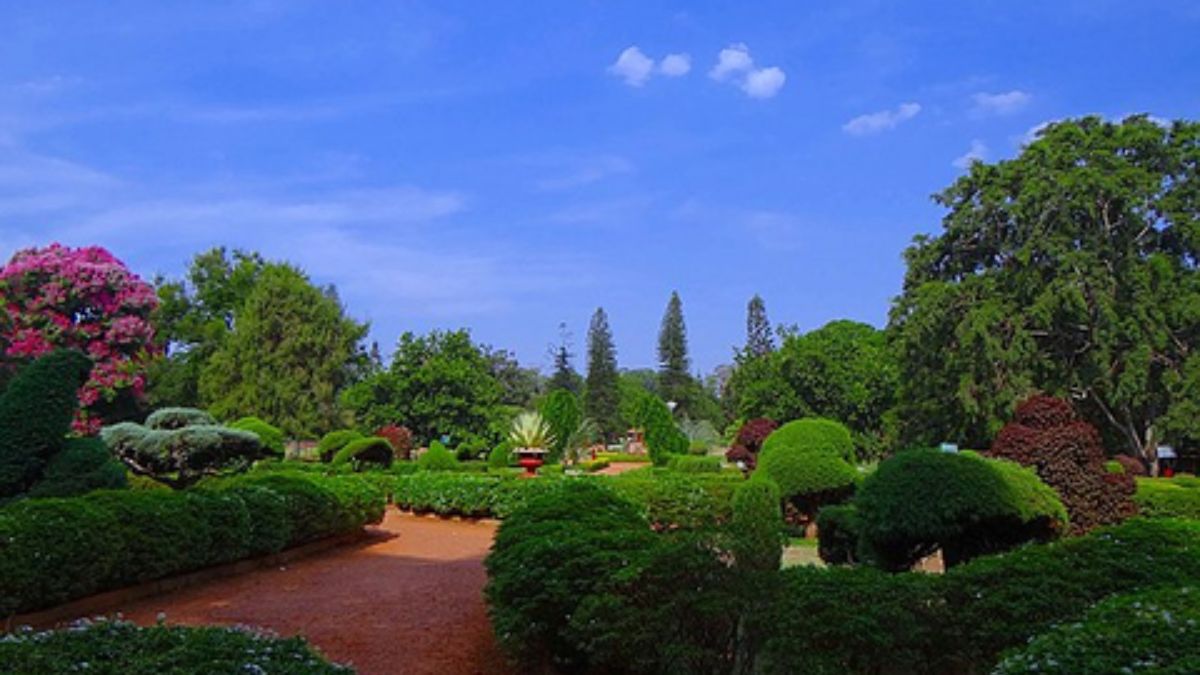Bangalore’s Lalbagh, is one of the most beautiful botanical gardens and a green oasis in the city. But, the garden is only about to get better and more vast. Thanks to a drive to diversify its collection of plants, Bangalore’s famous Lalbagh Botanical Garden will now feature a mini version of the Western Ghats.
Bangalore’s Lalbagh To Get A “Mini Western Ghats”
In an aim to expand and improve the area, Bangalore’s Lalbagh Botanical Garden is set to have a mini version of the Western Ghats boasting a variety of plants. As per reports by the Deccan Herald, 240 saplings of 132 species from the Western Ghats were planted on August 1.
The plantation took place in a six-acre wasteland located behind the monumental Lalbagh rock on the south gate side. The aim is to create a forest patch resembling the Western Ghats, a global biodiversity hotspot known as the Sahyadri, state the reports.
As per the reports, in the coming months, plants totalling 350 to 400 species have been planned to be added. The plants were sourced from seven districts in Karnataka, which are part of the Western Ghats range, stated the report. The plants include a mix of endemic, rare, endangered, and threatened species.
Also Read: Bangalore’s Lalbagh Gears For Independence Day Flower Show; Parking Restrictions Announced
What Does The Future Look Like For The Botanical Garden?
Speaking to Metrolife, the Joint Director of Horticulture, M Jagadeesh said that they want to conserve and propagate these species. As per the Deccan Herald’s report, additionally, he aims for the Block to serve as a site for plant research and school excursions. And also a gateway for those unable to travel to the Western Ghats, state the report.
The drive is a part of their efforts to introduce new species to the 240-acre botanical garden. Which already houses 2,350 species, with some trees being over 200 years old, says Deccan Herald. To simulate the climate of the Western Ghats, they have also installed 60 rain guns.
Jagadeesh also added that they will operate them intermittently every day. This is to simulate the rain conditions and the humid environment of the Western Ghats. Additionally, they have also dug up a borewell for irrigation, state the report.
They have brought a total of 61 species to Lalbagh, out of which 39 are rare, endangered, and threatened. Including Hanigere mara, Rama patre, Mullu sampige, and Murugana huli, stated the report. Additionally, 22 species are endemic, such as Holay gaeru, Uppaage mara, Saalu dhoopa, and Kiralbhogi.
Also Read: 8 Villas Near Mumbai, Delhi, Bangalore And Kolkata You Can Book For Your Gang Last Minute
Authorities estimate that the ‘Western Ghats Block’ of Lalbagh will open to the public in three to four years.
Cover image courtesy: Wikimedia Commons (Representative Image)

